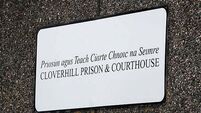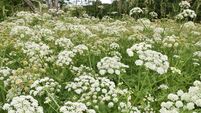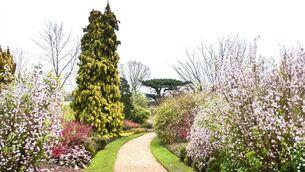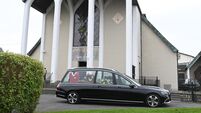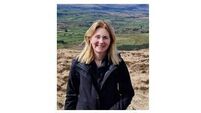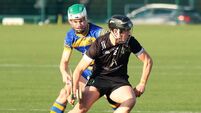Islands of Ireland: What the Butler saw

The guitar-shaped Ormond’s Island lies close to the Cork/ Kerry border on the mountainous Beara Peninsula with the Kingdom just able to claim it by dint of a few kilometres. It has no residents now and is grazed by cattle who can loll across a connecting causeway at low tide.
The island lies just across the busy road from the Cloonee lakes in the phenomenal Gleninchaquin valley whose glaciated forms includes all nouns of a glacial vocabulary: corries; striations; erratics. Oileán Urumhan in Irish (Ormond) is in the parish of Tuosist.
The Island was once owned by relatives of the historic family of O’Sullivan Beare whose chieftain Donal Cam led 1,000 followers 500km north to Co Letirim in 1602 after his fortresses at Dunboy and Dursey were destroyed by the English under George Carew.
The O’Sullivans of Ardea resided in a castle of the same name very close to Ormond Island. However, the castle was destroyed on Cromwell’s orders in 1643 and the family were obliged to rent their former property. The lands were passed down the generations.
One member of the sept, Darby O’Sullivan, aged103, requested a renewal of the lease from the Earl of Shelburne in 1793. Ormond Island was named after the earls of Ormond, the Butlers, allied to the Crown and mortal enemies of the Gaelic chieftains.

It appears the island was unpopulated for a long time and was certainly had no one living on it during the Famine. The 1901 census records a family of three living there: Patrick Casey aged 66; Katie aged 25 and Jeremiah aged 22.
With just three people available to work the farm, life would have been difficult, made more so when Jeremiah fell foul of the law. At a pattern in Kilmacillogue just up the road he was charged with assault having thrown a stone which inflicted injuries to the frontal and nasal bones of a Patrick O’Sullivan, reported the Kerry Sentinel. He was duly jailed.
A ruined farmhouse with out buildings and a dwelling on the eastern end are all that remains today. Farming was obviously a mainstay of their existence but in all likelihood fishing too. Pilchard fishing provided huge employment in the Kenmare Bay from the 17th century till stocks dwindled away. Fish palaces for the smoking and curing of the pilchards were common up and down the bay.

Nowadays whale-watching is almost a national past-time but 100 years and more ago cetaceans were a valuable commodity and the related industry supported hundreds of people not least at the Inishkea islands in Co Mayo where a Norwegian company operated.
The presence of the whales was enough of a surprise in 1863 for The Tralee Chronicle and Killarney Echo to report that “we were agreeably surprised here on Monday by the visit of no less than two monstrous whales. One of them came in with the tide and was first seen between Ormond’s Island and Ardea by a man named Shea.”
However, the whale provoked more than curiosity as the paper reported:
the sea monster soon floated into a creek and apparently fell asleep when Shea and two boys took out a boat and made him fast to a rock by means of a rope. The tide having receded, Shea dispatched the animal with an axe.
It measured 26 feet in length and 15 feet in girth [probably a minke]. Crowds flocked to see it when suddenly another floated in to the creek. Its fate is not recorded.
Ormond’s Island has a couple of impressive standing stones. Not exactly news as there are probably more prehistoric structures on Beara Peninsula than cars. One archaeology websites refers to “a small boulder burial in the fence line which will soon be lost to the sea”.
Further evidence, if any were needed, of how the sea is munching our past for lunch. It also suggests many burial sites were located on the island but were cleared for agriculture. The two stones and the 15m hill are perfectly aligned.
Nowadays Ormond island is an unremarkable place but secures its place in history as being on the interface of the Gaelic/ English wars.
Stroll across the beach at low tide about 10km west of Kenmare Bridge.




